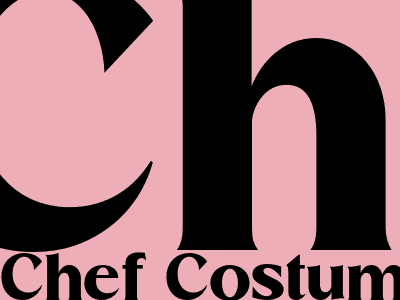Chef Costume: A Guide to Selecting the Right Attire for Professional Chefs
Introduction
Culinary professionals require specialized attire to maintain hygiene, safety, and comfort in the demanding kitchen environment. Chef costumes, comprising various garments, play a crucial role in ensuring a professional and functional workspace. This comprehensive guide delves into the intricacies of chef costume selection, empowering you with the knowledge to make informed decisions for your culinary journey.
The Essential Chef Costume Components
A complete chef costume typically consists of the following components:
- Chef's Hat: Prevents hair from falling into food and absorbs sweat.
- Chef's Jacket: Protects clothing from spills and heat, with buttons for easy removal in emergencies.
- Chef's Pants: Constructed from durable, flame-resistant materials to withstand kitchen hazards.
- Chef's Apron: Shields clothing from stains, spills, and heat, and provides storage for tools.
- Chef's Footwear: Non-slip, closed-toe shoes with arch support ensure comfort and safety on slippery kitchen floors.
Choosing the Right Chef's Jacket
The chef's jacket is a cornerstone of the costume, providing protection and a professional appearance. Consider the following factors when selecting a jacket:
- Material: Cotton or cotton blends offer breathability, while synthetic materials provide durability and stain resistance.
- Fit: Choose a jacket that fits comfortably, allowing for movement without being too loose or restrictive.
- Features: Look for jackets with ample pockets for storage, double-breasted closures for added protection, and a thermometer pocket for convenience.
Selecting Durable Chef's Pants
Chef's pants must withstand the rigors of the kitchen, ensuring both durability and comfort. Here are some key considerations:
- Material: Choose pants made from durable fabrics like denim or twill, which can withstand heat, stains, and abrasion.
- Reinforcements: Look for pants with reinforced knees and crotch areas for added durability in high-wear zones.
- Fit: Select pants that fit comfortably at the waist and legs, allowing for freedom of movement without being baggy.
Choosing a Functional Chef's Apron
The chef's apron serves as a protective barrier against spills, heat, and stains. When selecting an apron, consider the following:
- Material: Opt for aprons made from durable materials like canvas or denim, which can withstand wear and tear.
- Coverage: Choose an apron that provides ample coverage from chest to knees, ensuring maximum protection.
- Pockets: Look for aprons with multiple pockets for storing essential tools and utensils within easy reach.
Selecting Comfortable Chef's Footwear
Proper footwear is crucial for kitchen safety and comfort. Consider the following when selecting chef's shoes:
- Non-Slip Sole: Choose shoes with slip-resistant soles to prevent accidents on wet or greasy kitchen floors.
- Arch Support: Look for shoes that provide arch support to reduce fatigue and discomfort during long shifts.
- Closed-Toe: Closed-toe shoes protect feet from spills, burns, and falling objects.
Additional Tips for Chef Costume Selection
Consider the following additional tips to enhance your chef costume selection:
- Invest in high-quality materials that can withstand the rigors of the kitchen.
- Choose garments that fit comfortably, allowing for freedom of movement and breathability.
- Consider your personal style and preferences when selecting colors and patterns for your costume.
- Regularly wash and maintain your chef costume to ensure hygiene and longevity.
Conclusion
Selecting the right chef costume is essential for maintaining professionalism, safety, and comfort in the kitchen environment. By understanding the various components of a chef costume and considering the factors discussed in this guide, you can make informed decisions that will enhance your culinary journey. Remember to prioritize quality materials, proper fit, and functionality to ensure your chef costume serves you well.

Comments